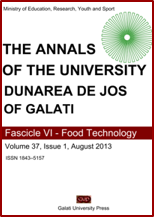Bioethanol production from residual lignocellulosic materials: A review – Part 2
Abstract
Lignocellulosic material (LCM) can be employed as feedstock for biorefineries, a concept related to industries designed to process biomass for producing chemicals, fuels and/or electrical power. According to this philosophy, LCM can be fractionated and the resulting fractions employed for specific applications. Bioethanol production from cellulosic fraction of LCM involves: hydrolysis of polysaccharides and fermentation of the monomers into bioethanol. Enzymatic hydrolysis is catalyzed by cellulolytic enzymes and fermentation is carried out by bacteria, yeasts or fungi. The main
objective of this article is to review different process integration technologies for bioethanol production from LCM. This paper include: separate hydrolysis and fermentation (SHF), simultaneous saccharification and fermentation (SSF), and simultaneous saccharification and co-fermentation (SSCF) methods. Furthermore, the fermentation process and a comparative data of cellulases, hemicellulases and ethanol producing-microorganisms were presented.


